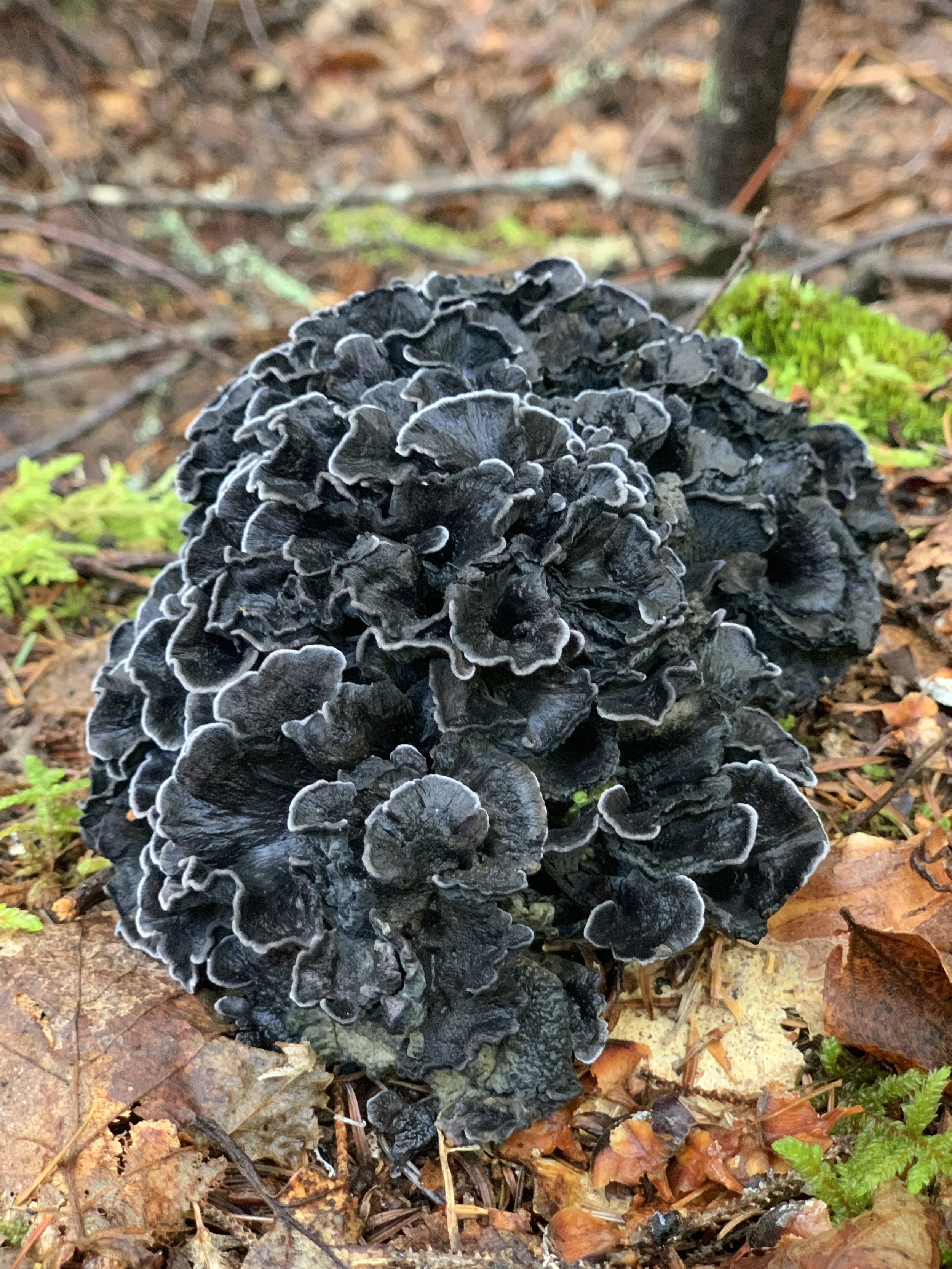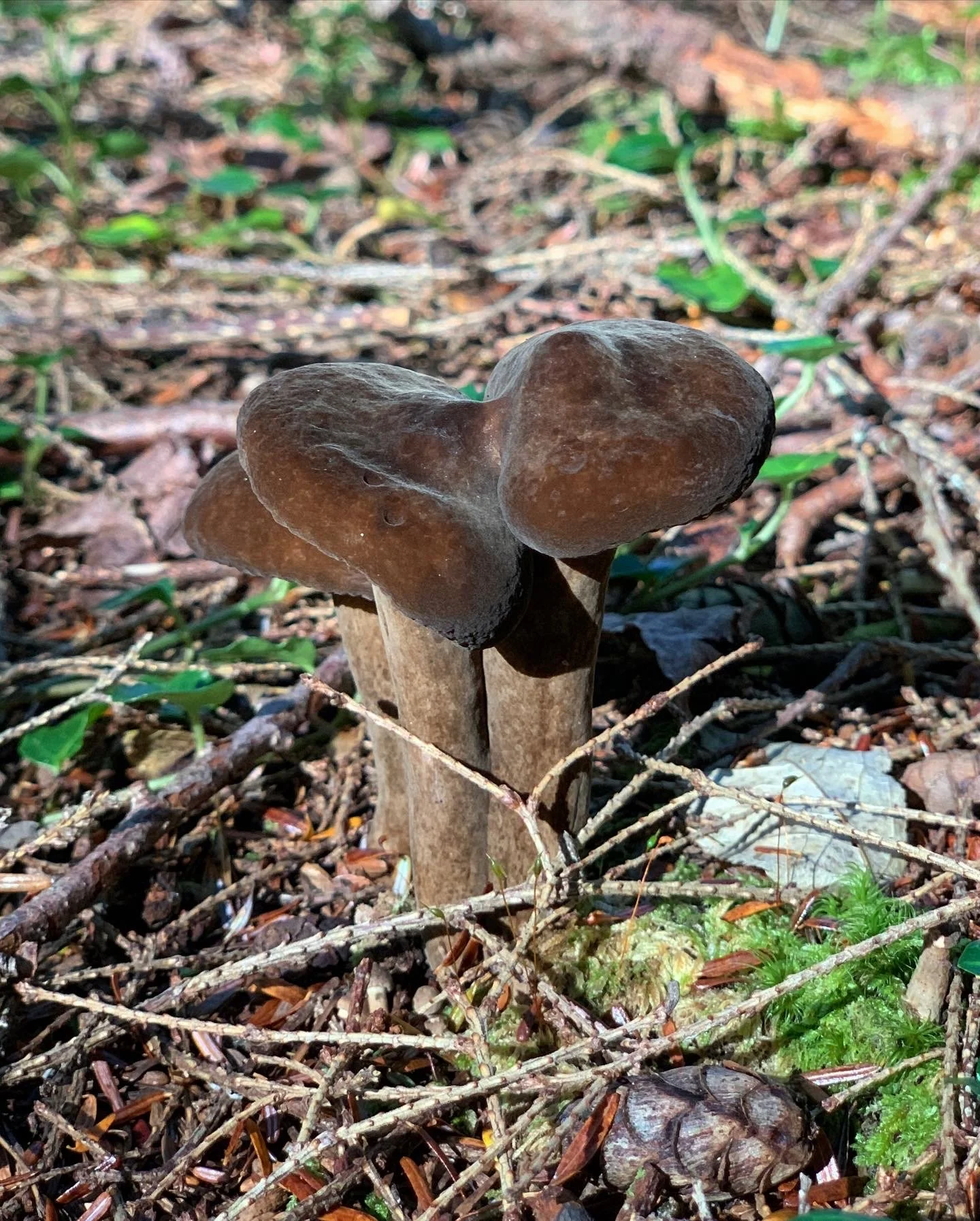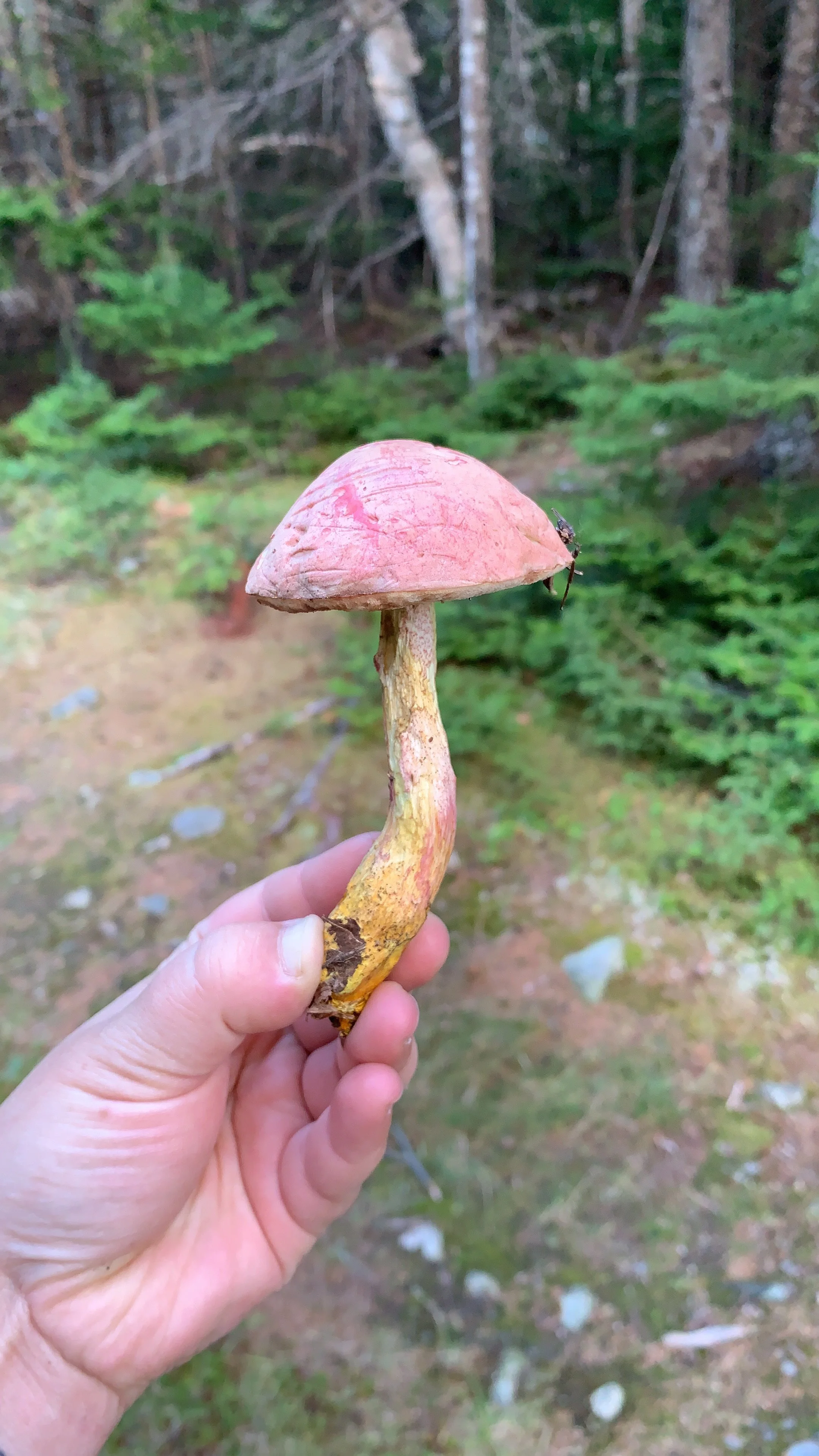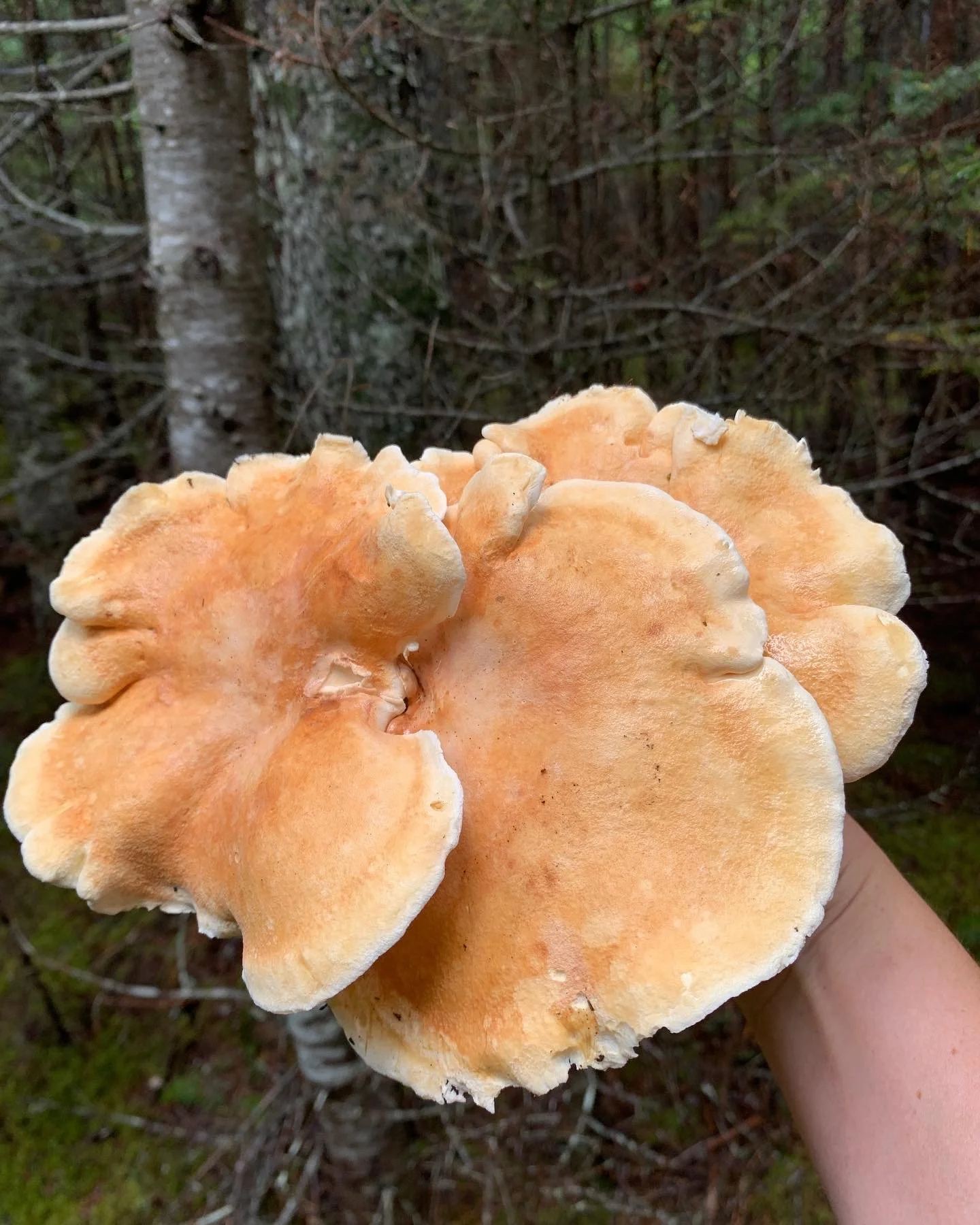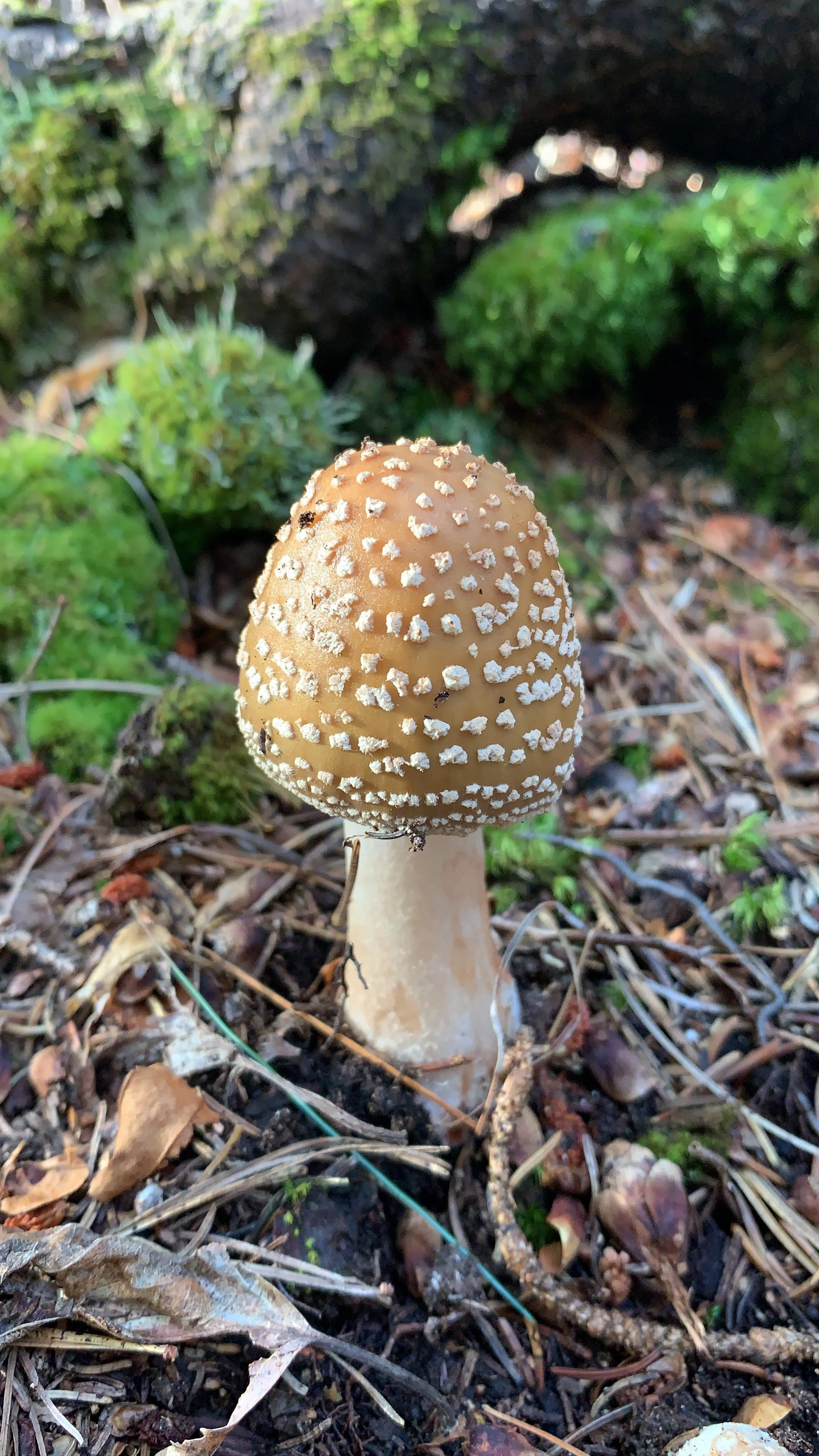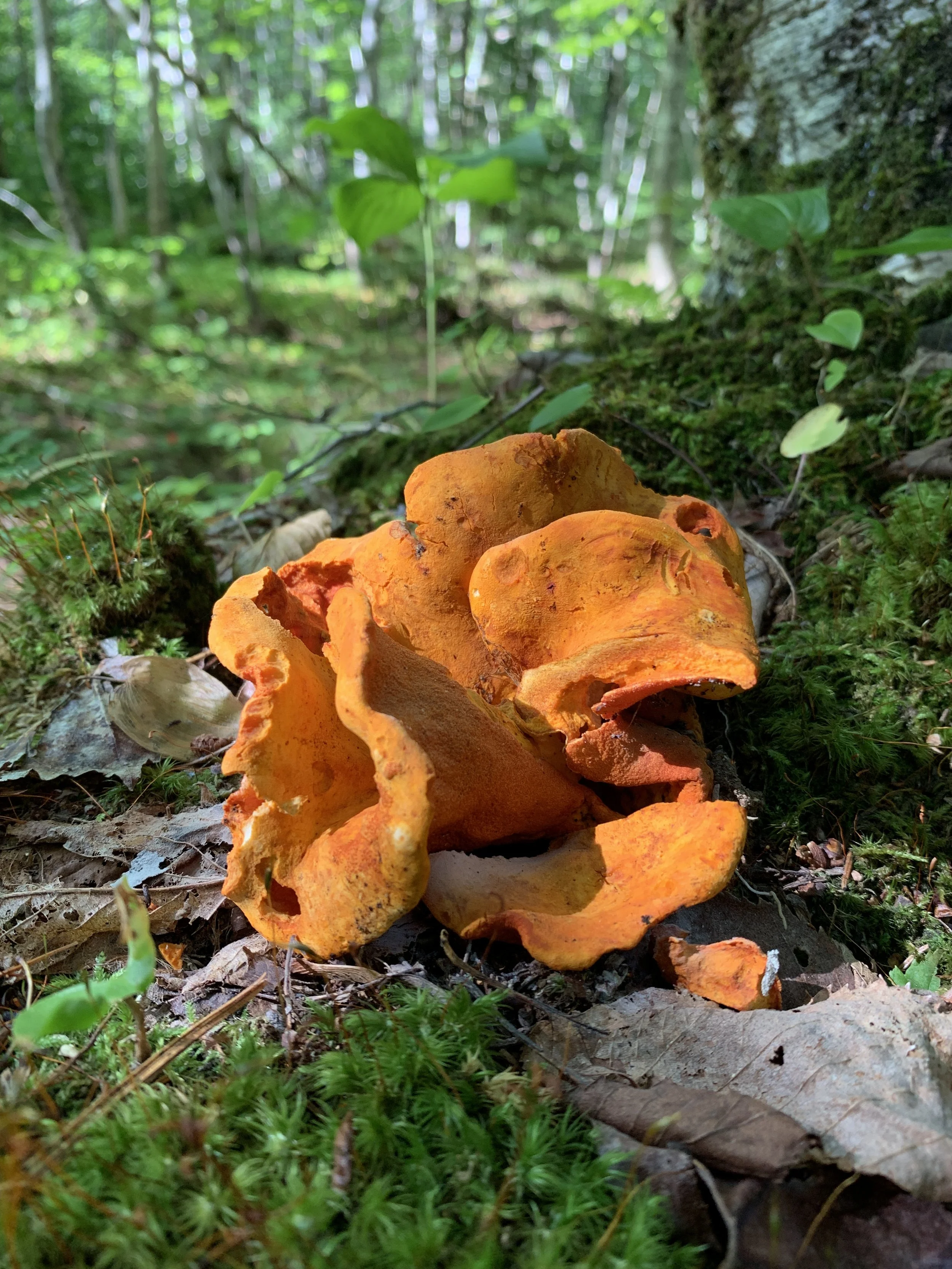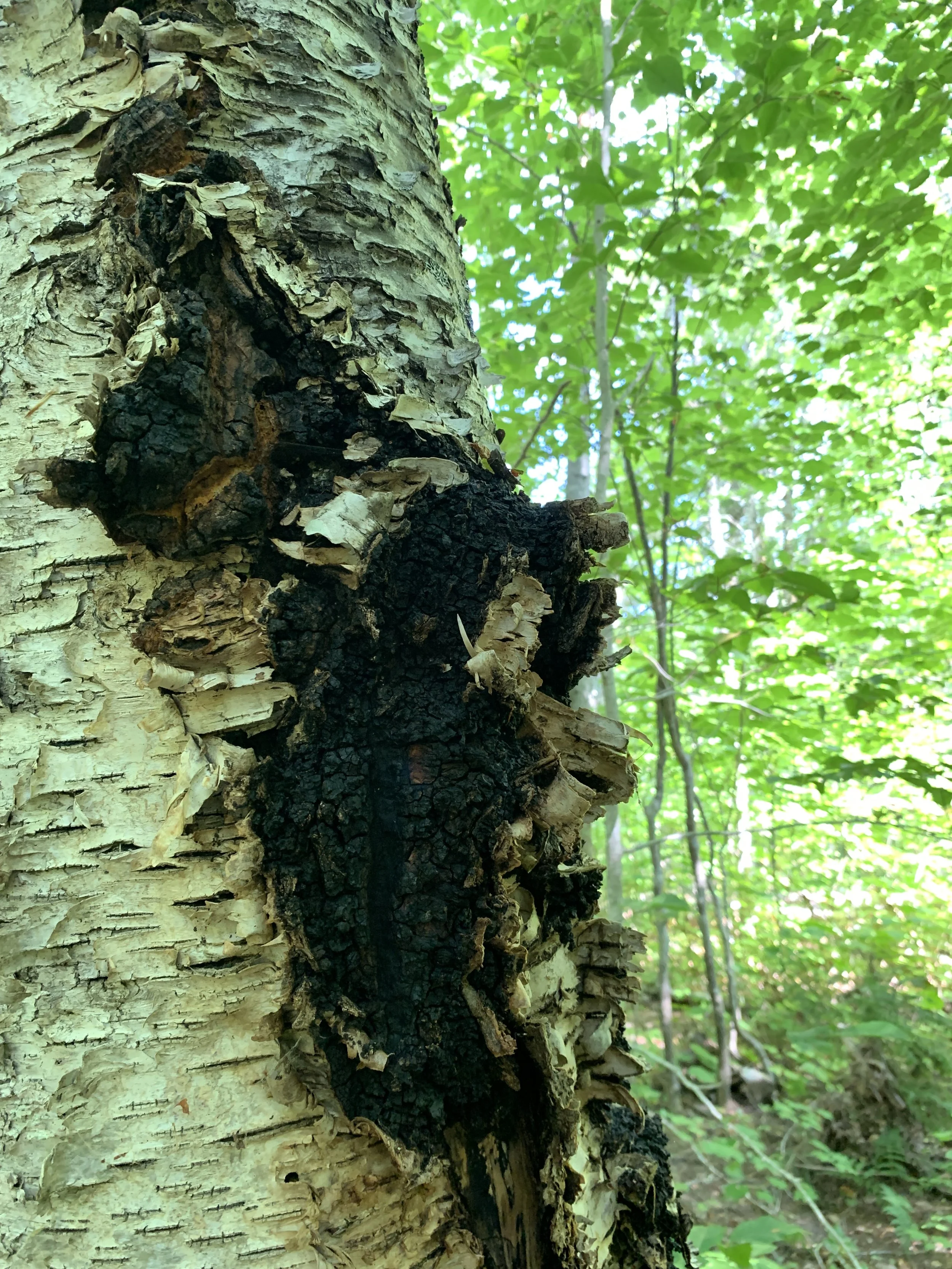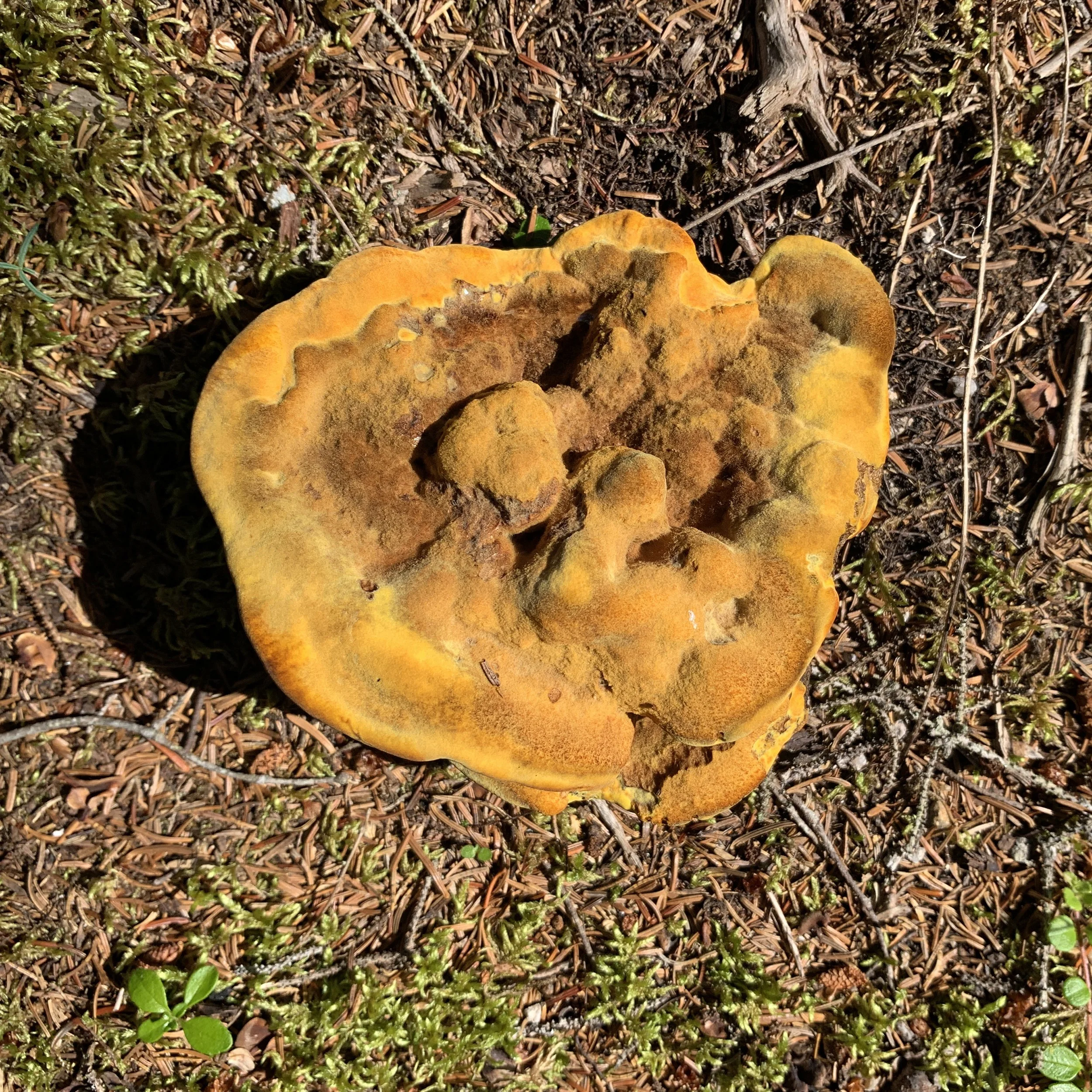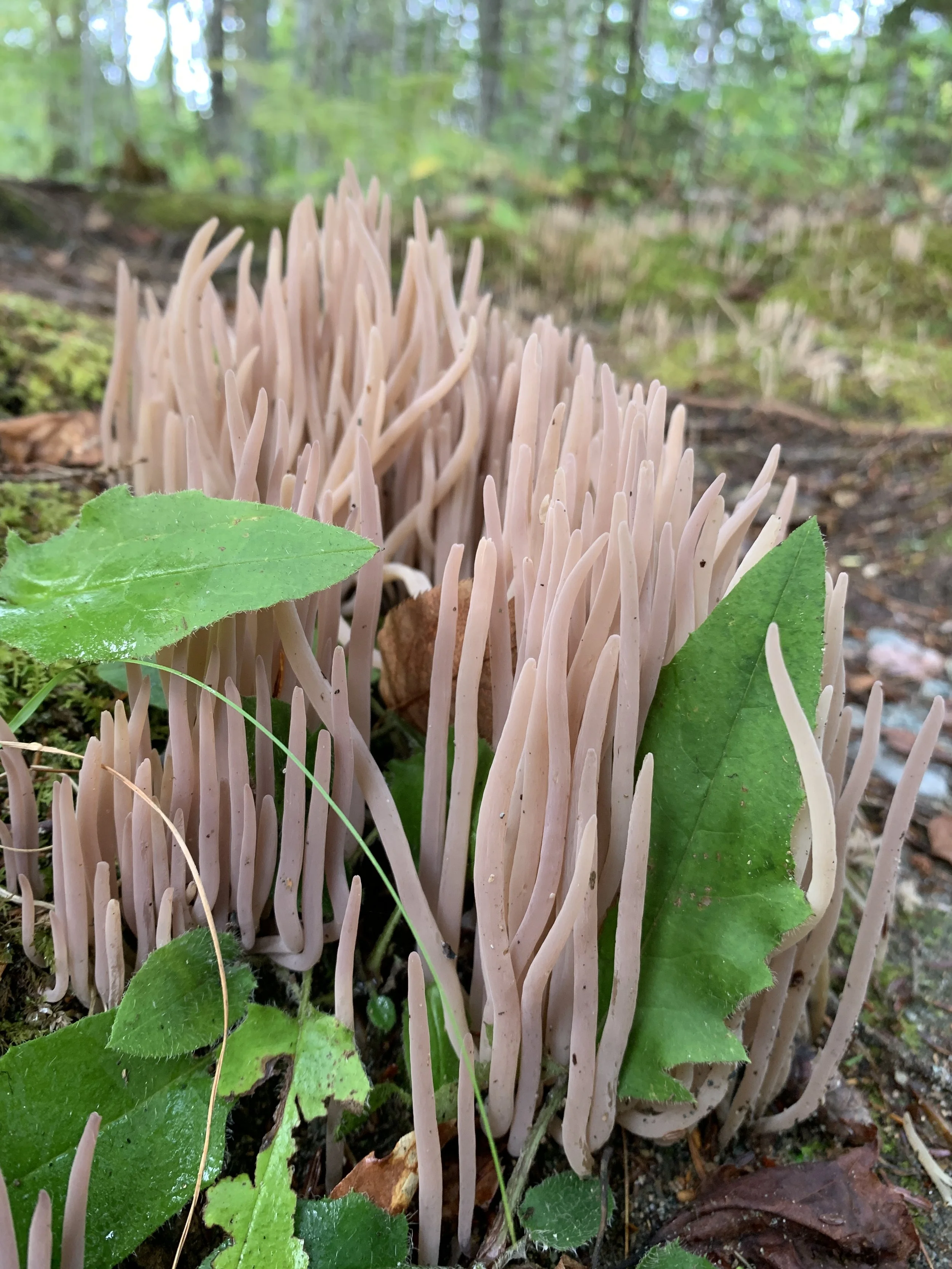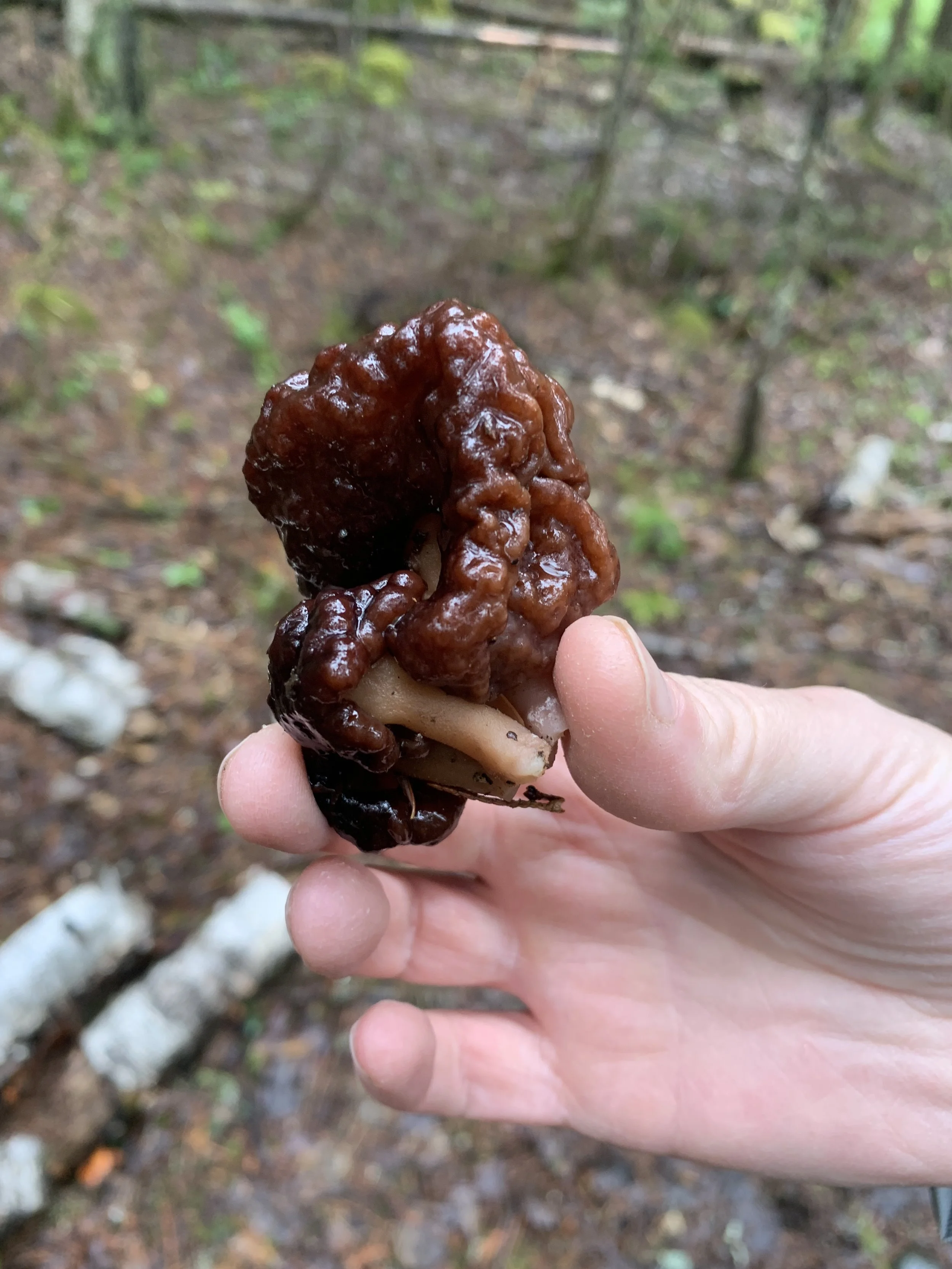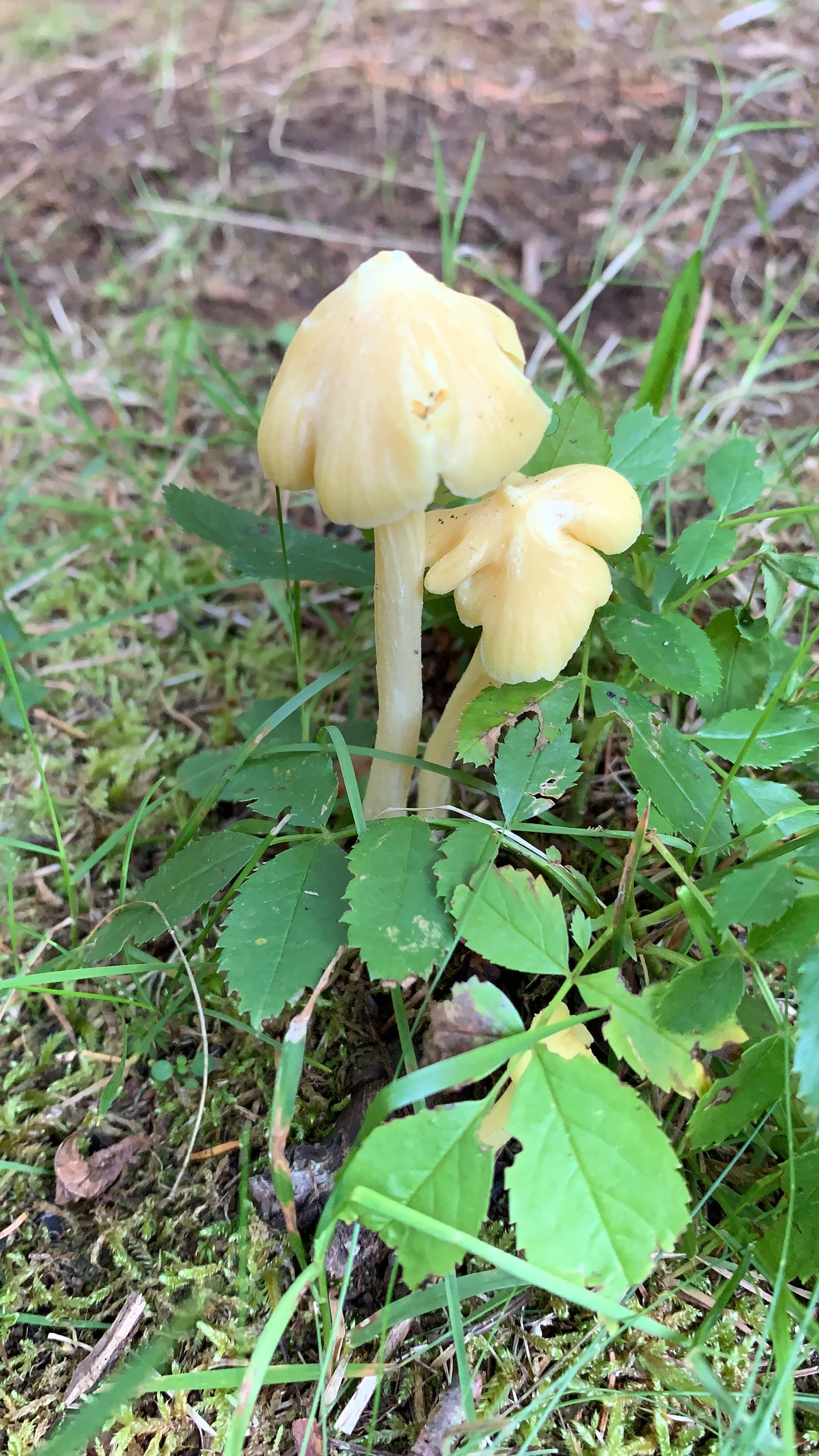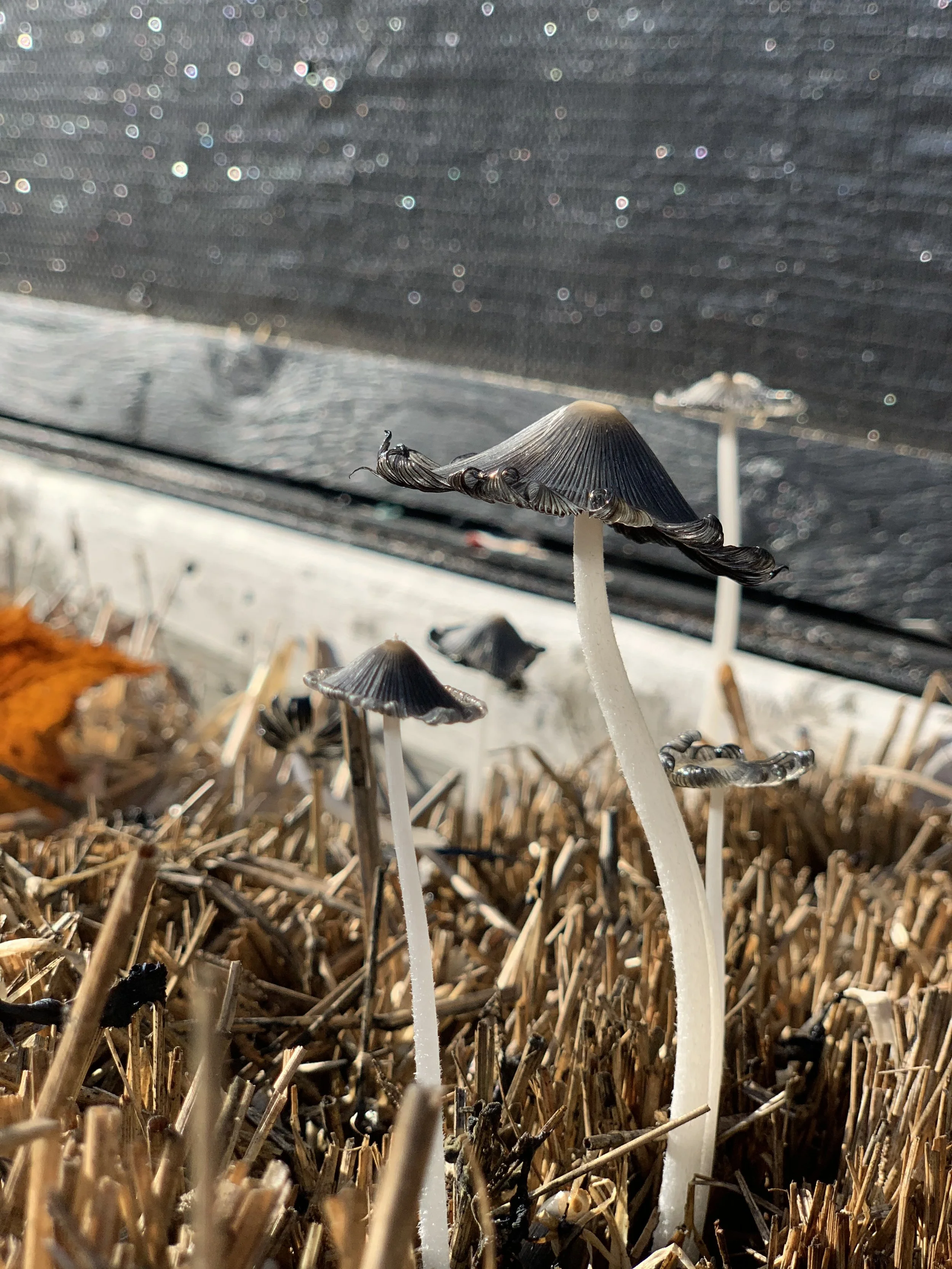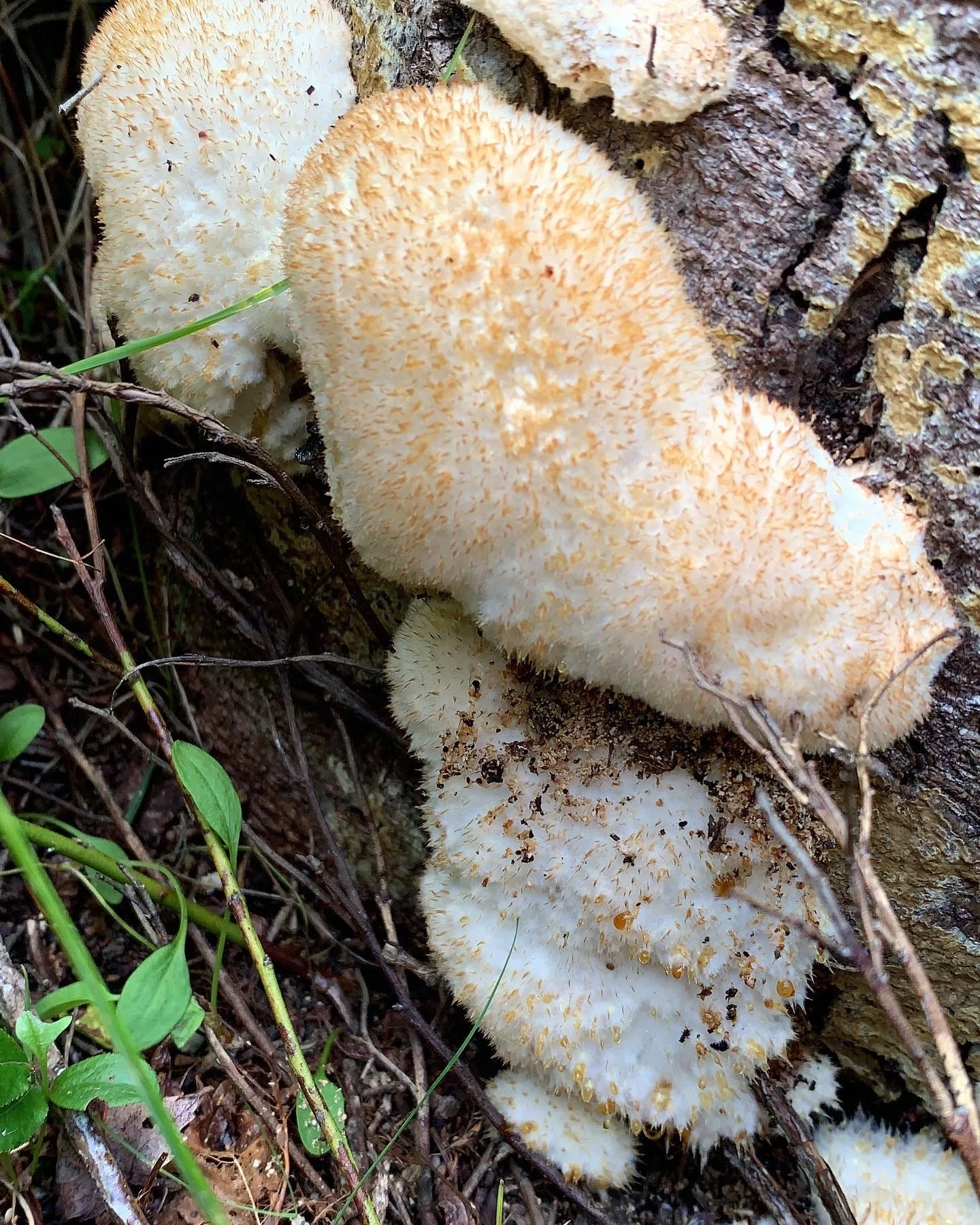Wreck Cove Fungi Database
Please note: This database was created for the benefit of guests who love ID’ing plants / fungi, as well as to show off the interesting and diverse nature that lives here in Wreck Cove. I am an amateur forager, NOT a mycologist. If you spot any incorrect information or ID errors, please email me and I will be glad to know! wreckcovecabins@gmail.com
Mycorrhizal, Mycorrhiza
Mushrooms that are mycorrhizal are involved in a symbiotic (mutually beneficial) relationship with the tiny rootlets of plants—usually trees. The hyphae of the mushroom's mycelium surround the tree rootlets with a sheath (called a mycorrhiza), and the mushroom helps the tree absorb water and nutrients while the tree provides sugars and amino acids to the mushroom. The organisms may need each other to survive. This glossary resource is a great place to learn more.
Species: Ramaria formosa
Kingdom: Fungi, Division: Basidiomycota, Class: Agaricomycetes, Order: Gomphales, Family: Gomphaceae, Genus: Ramaria
Species: Cantharellus Cibarius
Kingdom: Fungi, Division: Basidiomycota, Class: Agaricomycetes, Order: Cantharellales, Family: Cantharellaceae, Genus: Cantharellus.
Species: Polyozellus Multiplex
Kingdom: Fungi, Division: Basidiomycota, Class: Agaricomycetes, Order: Thelephorales, Family: Thelephoraceae, Genus: Polyozellus
Species: Best guess is Hydnellum Peckii
Kingdom: Fungi, Division: Basidiomycota, Class: Agaricomycetes, Order: Thelephorales, Family: Bankeraceae Genus: Hydnellum
Species: Lactarius lignyotus
AKA Velvet Milk Cap
Kingdom: Fungi, Division: Basidiomycota, Class: Agaricomycetes, Order: Russulales, Family: Russulaceae, Genus: Lactarius
Species: Harrya chromapes
Kingdom: Fungi, Division: Basidiomycota, Class: Agaricomycetes, Order: Boletales, Family: Boletaceae, Genus: Harrya
Species: Boletus edulis
Kingdom: Fungi, Division: Basidiomycota, Class: Agaricomycetes, Order: Boletales, Family: Boletaceae, Genus: Boletus
Species: Catathelasma ventricosum
Kingdom: Fungi, Division: Basidiomycota, Class: Agaricomycetes, Order: Agaricales, Family: Tricholomataceae, Genus: Catathelasma
Species: Suillus spraguei
Kingdom: Fungi, Division: Basidiomycota, Class: Agaricomycetes, Order: Boletales, Family: Suillaceae, Genus: Suillus
Species: Albatrellus ovinus
Division: Basidiomycota, Class: Agaricomycetes, Order: Russulales, Family: Albatrellaceae, Genus: Albatrellus
Species: Amanita pantherinoides
Division: Basidiomycota, Class: Agaricomycetes, Order: Agaricales, Family: Amanitaceae, Genus: Amanita
Parasite, Parasitic
Mushrooms that are parasitic consume the living tissues of other organisms (plants, trees, even insects or other mushrooms), sometimes causing a disease or killing them in the process (in which case they are pathogenic). Parasitism is fairly common among mushrooms, and is famously demonstrated in Pseudoboletus parasiticus, which attacks the fungus Scleroderma citrinum. Other parasites include species of Hypomyces, which parasitize mushrooms, and Armillaria solidipes, which attacks trees and is a constant concern in forest management. Here is my resource for this.
Species: Hypomyces lactifluorum
Kingdom: Fungi, Division: Ascomycota, Class: Sordariomycetes, Order: Hypocreales, Family: Hypocreaceae, Genus: Hypomyces
Species: Phaeotremella frondosa
Kingdom: Fungi, Division: Basidiomycota, Class: Tremellomycetes, Order: Tremellales, Family: Phaeotremellaceae, Genus: Phaeotremella
Species: Inonotus obliquus
Division: Basidiomycota, Class: Agaricomycetes, Order: Hymenochaetales, Family: Hymenochaetaceae, Genus: Inonotus
Species: Phaeolus schweinitzii
Division: Basidiomycota, Class: Agaricomycetes, Order: Polyporales, Family: Fomitopsidaceae
Saprobe, Saprobic, Saprophyte, Saprotrophic
Mushrooms that are saprobes survive by decomposing dead or decaying organic material and using it as food. Many wood-rotting fungi are saprobes, and help decompose deadwood—but other wood rotters are parasitic and attack living wood. Most yard and garden mushrooms (for example Marasmius oreades) are saprobes, as well as dung-loving mushrooms (Panaeolus semiovatus is an example) and mushrooms that decompose leaf or needle litter (like Marasmius pulcherripes).
Species: Chlorociboria aeruginascens
Kingdom: Fungi, Division: Ascomycota, Subdivision: Pezizomycotina, Class: Leotiomycetes, Order: Helotiales, Family: Chlorociboriaceae, Genus: Chlorociboria
Species: Alloclavaria purpurea
Division: Basidiomycota, Class: Agaricomycetes, Order: Hymenochaetales, Family: Repetobasidiaceae, Genus: Alloclavaria
Species: Clavulinopsis fusiformis
Division: Basidiomycota, Class: Agaricomycetes, Order: Agaricales, Family: Clavariaceae, Genus: Clavulinopsis
Species: Gyromitra esculenta
Kingdom: Fungi, Division: Ascomycota, Class: Pezizomycetes, Order: Pezizales, Family: Discinaceae, Genus: Gyromitra
Species: Entoloma murrayi
Kingdom: Fungi, Division: Basidiomycota, Class: Agaricomycetes, Order: Agaricales, Family: Entolomataceae, Genus: Entoloma
Species: Tapinella atrotomentosa
Kingdom: Fungi, Division: Basidiomycota, Class: Agaricomycetes, Order: Boletales, Family: Tapinellaceae, Genus: Tapinella
Species: Gloeophyllum sepiarium
Kingdom: Fungi, Division: Basidiomycota, Class: Agaricomycetes, Order: Gloeophyllales, Family: Gloeophyllaceae, Genus: Gloeophyllum
Species: Coprinopsis lagopus
Kingdom: Fungi, Division: Basidiomycota, Class: Agaricomycetes, Order: Agaricales, Family: Psathyrellaceae, Genus: Coprinopsis
Fungi with mysterious ecology!
Species: Neolecta
Kingdom: Fungi, Division: Ascomycota, Subdivision: Taphrinomycotina, Class: Neolectomycetes, Order: Neolectales, Family: Neolectaceae, Genus: Neolecta
Species: Ptychogaster albus (formerly Postia ptychogaster)
Kingdom: Fungi, Division: Basidiomycota, Class: Agaricomycetes, Order: Polyporales, Family: Fomitopsidaceae




